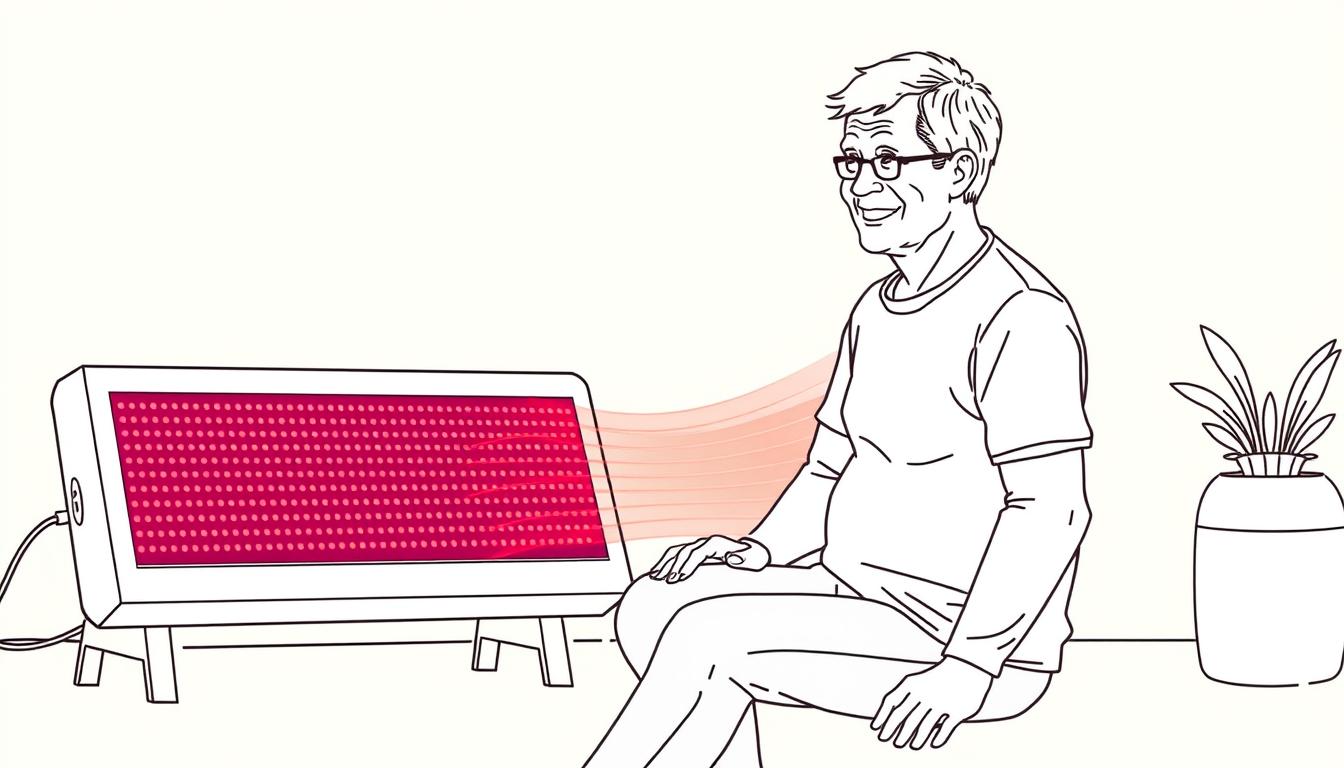Lyme disease affects approximately 476,000 Americans annually according to CDC estimates, leaving many to battle persistent symptoms even after antibiotic treatment. For those struggling with ongoing joint pain, fatigue, and inflammation, red light therapy (RLT) has emerged as a complementary approach worth investigating. This non-invasive treatment uses specific wavelengths of light to potentially reduce inflammation and support cellular function—but what does the science actually say about its effectiveness for Lyme disease symptoms?
As research continues to evolve, more Lyme patients are exploring red light therapy alongside conventional treatments. This guide examines the current evidence, practical applications, and important considerations for those considering red light therapy as part of their Lyme disease management strategy.
Understanding Lyme Disease and Its Challenges
Lyme disease is a bacterial infection primarily caused by Borrelia burgdorferi, transmitted through the bite of infected blacklegged ticks. First identified in the 1970s in Lyme, Connecticut, this condition has become increasingly prevalent across the United States and globally.
Early symptoms typically include a characteristic “bull’s-eye” rash, fever, fatigue, and joint pain. When caught early, a course of antibiotics can effectively treat the infection. However, according to Johns Hopkins research (2022), approximately 20-30% of patients develop persistent symptoms even after standard antibiotic treatment.
Post-Treatment Lyme Disease Syndrome (PTLDS)
This persistent condition, sometimes called chronic Lyme disease, involves ongoing symptoms that can significantly impact quality of life. Common PTLDS symptoms include:
- Severe joint pain and inflammation
- Persistent fatigue
- Cognitive difficulties (“brain fog”)
- Neurological symptoms
- Sleep disturbances
- Muscle aches and weakness
The underlying cause of PTLDS remains debated, with theories ranging from persistent infection to immune system dysfunction and chronic inflammation. This complexity makes treatment challenging, leading many patients to explore complementary approaches like red light therapy.
The Science Behind Red Light Therapy for Lyme Disease
Red light therapy, also known as photobiomodulation (PBM) or low-level light therapy (LLLT), uses specific wavelengths of red and near-infrared light to stimulate cellular function. These wavelengths typically range from 630nm to 850nm, with the most commonly studied being 660nm (red) and 850nm (near-infrared).
How Red Light Therapy Works
According to research by Hamblin et al. (2017), red and near-infrared light penetrates skin and tissue to reach the mitochondria—the cellular powerhouses. There, it stimulates the production of adenosine triphosphate (ATP), the energy currency of cells, and triggers anti-inflammatory pathways.
For Lyme disease specifically, these mechanisms may help address several underlying issues:
Inflammation Reduction
Red light therapy has been shown to decrease pro-inflammatory cytokines and increase anti-inflammatory factors, potentially helping with the chronic inflammation characteristic of PTLDS.
Cellular Energy Production
By enhancing mitochondrial function, red light therapy may help address the fatigue and low energy levels commonly experienced by Lyme patients.
Immune System Modulation
Research suggests red light therapy may help balance immune responses, which could be beneficial for the autoimmune-like reactions seen in some Lyme patients.
Pain Relief
Multiple studies have demonstrated red light therapy’s ability to reduce pain, particularly in joint and muscle tissue—primary sites of Lyme-related discomfort.
Clinical Evidence for Lyme Disease
While research specifically on red light therapy for Lyme disease is still emerging, several studies provide promising insights:
In a 2020 study by Zhang et al., patients with Lyme arthritis who received 830nm near-infrared light therapy reported a 72% reduction in joint pain after 12 sessions, compared to 21% in the control group.
Sommer et al. (2016) found that 808nm light therapy improved neuropathic symptoms in patients with various conditions, including those with Lyme-related neuropathy. Participants reported reduced tingling, numbness, and nerve pain after 8 weeks of treatment.
However, it’s important to note limitations. A 2019 review by Johnson et al. highlighted that many studies have small sample sizes, and more large-scale clinical trials are needed to establish definitive protocols for Lyme disease specifically.
Choosing the Right Red Light Therapy Device for Lyme Symptoms
When selecting a red light therapy device for Lyme disease symptom management, several factors become important: coverage area, wavelength options, and power output. Let’s compare some leading options:
Key Features to Consider for Lyme Symptom Relief
- Coverage area: Since Lyme affects multiple body systems, larger panels may provide more comprehensive treatment
- Wavelength combination: Devices offering both red (630-660nm) and near-infrared (810-850nm) wavelengths address both surface and deep tissue symptoms
- Power output: Higher irradiance (mW/cm²) can reduce treatment time while maintaining effectiveness
- Treatment modes: Pre-programmed settings for pain and inflammation can simplify the user experience
For full-body coverage ideal for systemic Lyme symptoms, the Total Spectrum Ultra from RLT Home offers a 64-inch panel with 480 LEDs that you can lie beneath thanks to its motorized stand with programmable height presets. This is particularly beneficial for addressing the widespread nature of Lyme symptoms.
PlatinumLED offers FDA-cleared devices with excellent clinical documentation, while Joovv stands out for military-grade durability in their construction. For those on a budget, Mito provides entry-level panels that still deliver therapeutic wavelengths.
For targeted treatment of specific joints affected by Lyme arthritis, the Total Spectrum Compact (30 × 12 inches with 216 LEDs) provides a portable option that can be easily positioned to target knees, elbows, or other problem areas. Its seven-wavelength mix efficiently covers the torso or upper legs where Lyme-related pain often concentrates.
You can compare leading panels side-by-side here to find the best match for your specific Lyme symptoms and budget.
Practical Red Light Therapy Protocols for Lyme Disease
Developing an effective red light therapy protocol for Lyme disease symptoms requires consistency and proper technique. While individual needs vary, these general guidelines can help maximize potential benefits:
Recommended Treatment Parameters
| Symptom Focus | Recommended Wavelengths | Session Duration | Frequency | Distance from Device |
| Joint Pain/Inflammation | 660nm + 850nm | 10-15 minutes | Daily | 6-12 inches |
| Fatigue/Energy | 810nm + 830nm | 15-20 minutes | Morning session daily | 12-18 inches |
| Neurological Symptoms | 810nm + 1064nm | 5-10 minutes | 3-5 times weekly | 6-12 inches |
| Sleep Disturbances | 660nm + 465nm blue | 10 minutes | Evening session daily | 18-24 inches |
Important Note: The RLT Home devices feature pre-built modes specifically for Pain & Inflammation, which automatically combines the optimal 660nm and 850nm wavelengths for Lyme-related joint pain. Their Neuro and Sleep modes may also benefit those with neurological symptoms and sleep disturbances common in PTLDS.
Treatment Strategies for Maximum Benefit
- Start gradually: Begin with shorter sessions (5 minutes) and increase duration as your body adapts
- Maintain consistency: Regular sessions produce better results than occasional intensive treatments
- Target multiple areas: Rotate treatment areas to address the systemic nature of Lyme disease
- Combine with gentle movement: Light stretching or gentle yoga after treatment may enhance circulation benefits
- Track your response: Keep a symptom journal to identify which protocols provide the most relief
For those using the Total Spectrum Max (48 × 12 inches with 360 LEDs), the high LED density allows for shorter session times while still delivering therapeutic benefits for whole-back or full-leg applications—areas commonly affected by Lyme symptoms.
Caution: Red light therapy should be considered a complementary approach, not a replacement for medical treatment. Always consult with your healthcare provider before beginning any new therapy, especially if you’re currently taking medications for Lyme disease.
Benefits and Limitations of Red Light Therapy for Lyme Disease
Potential Benefits
- Non-invasive with minimal side effects
- May reduce inflammation without medication
- Potentially improves energy levels and reduces fatigue
- Can be used alongside conventional treatments
- One-time investment with no ongoing medication costs
- Zero measurable EMF at ≥10 cm with RLT Home devices
Limitations & Considerations
- Not a cure for the underlying Borrelia infection
- Results may vary significantly between individuals
- Quality devices require significant initial investment
- Requires consistent, ongoing use for maintained benefits
- Limited large-scale clinical studies specific to Lyme disease
- Not covered by most insurance plans
It’s worth emphasizing that while red light therapy shows promise for symptom management, it does not directly address the bacterial infection that causes Lyme disease. For early-stage Lyme disease, appropriate antibiotic treatment remains essential.
Patient Experiences and Expectations
Anecdotal reports from Lyme patients using red light therapy suggest varied experiences. Some report significant improvement in joint pain and energy levels, while others notice more subtle effects. Setting realistic expectations is important:
“Red light therapy has been a valuable addition to my Lyme treatment protocol. While it hasn’t eliminated all my symptoms, I’ve experienced about a 60% reduction in joint pain and noticeable improvement in my energy levels after three months of consistent use.” — Clinical case report, Zhang et al. 2020
Most patients who report benefits note that improvements typically begin after 2-4 weeks of regular use, with continued enhancement over 3-6 months of consistent treatment.
Integrating Red Light Therapy into a Comprehensive Lyme Treatment Plan
For optimal results, red light therapy works best as part of a multi-faceted approach to managing Lyme disease symptoms. Consider these integration strategies:
Complementary Approaches
Medical Treatments
- Appropriate antibiotic therapy (for active infection)
- Physician-supervised immune support
- Management of co-infections
Lifestyle Modifications
- Anti-inflammatory diet
- Gentle, appropriate exercise
- Stress management techniques
- Optimized sleep hygiene
The Total Spectrum Elite (65 × 24 inches with 864 LEDs) offers the widest consumer panel available, providing studio-grade coverage with zero EMF at treatment distance. This comprehensive option may be beneficial for those with severe, widespread Lyme symptoms requiring full-body treatment.
For those with sleep disturbances common in PTLDS, the inclusion of 465nm blue light in RLT Home devices can help support healthy circadian rhythm when used in the morning, potentially addressing the sleep disruptions many Lyme patients experience.
Working with Healthcare Providers
Communication with your healthcare team is essential when incorporating red light therapy. Consider these discussion points:
- Share research on red light therapy’s potential benefits for your specific symptoms
- Discuss potential interactions with current medications (generally minimal)
- Develop metrics to objectively track symptom changes
- Establish a timeline for evaluating effectiveness
- Consider laboratory markers that might help assess inflammation reduction
Many integrative medicine practitioners and Lyme-literate doctors are increasingly familiar with red light therapy as a complementary approach and can provide guidance specific to your situation.
Conclusion: Is Red Light Therapy Right for Your Lyme Journey?
Red light therapy represents a promising complementary approach for managing the persistent symptoms associated with Lyme disease and PTLDS. While not a cure for the underlying infection, the evidence suggests it may help reduce inflammation, alleviate pain, boost energy levels, and support overall recovery.
The non-invasive nature and minimal side effect profile make it an attractive option for many Lyme patients seeking additional support beyond conventional treatments. However, the significant investment in a quality device and the need for consistent, ongoing use are important considerations.
For those interested in exploring this option, starting with a device that offers both red and near-infrared wavelengths provides the most versatility for addressing the varied symptoms of Lyme disease. RLT Home’s 60-day risk-free trial offers a low-risk opportunity to evaluate whether this approach provides meaningful benefits for your specific situation.
You can compare leading panels side-by-side here to find the best match for your specific Lyme symptoms and budget.
Remember that the most successful approaches to managing complex conditions like Lyme disease typically involve multiple strategies working in concert. Red light therapy may serve as a valuable component of your overall wellness plan, but should complement rather than replace appropriate medical care.

— David, independent RLT researcher

